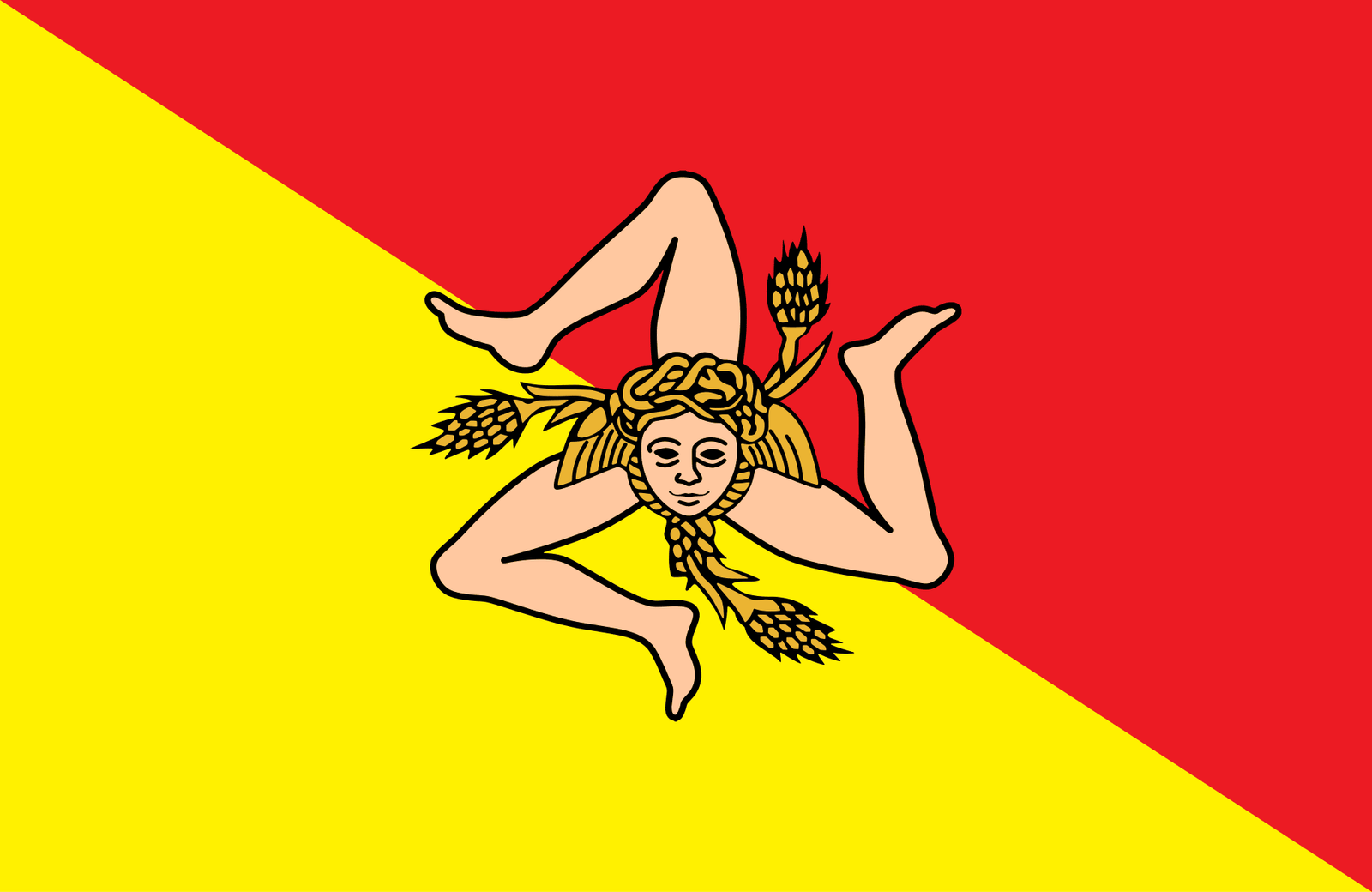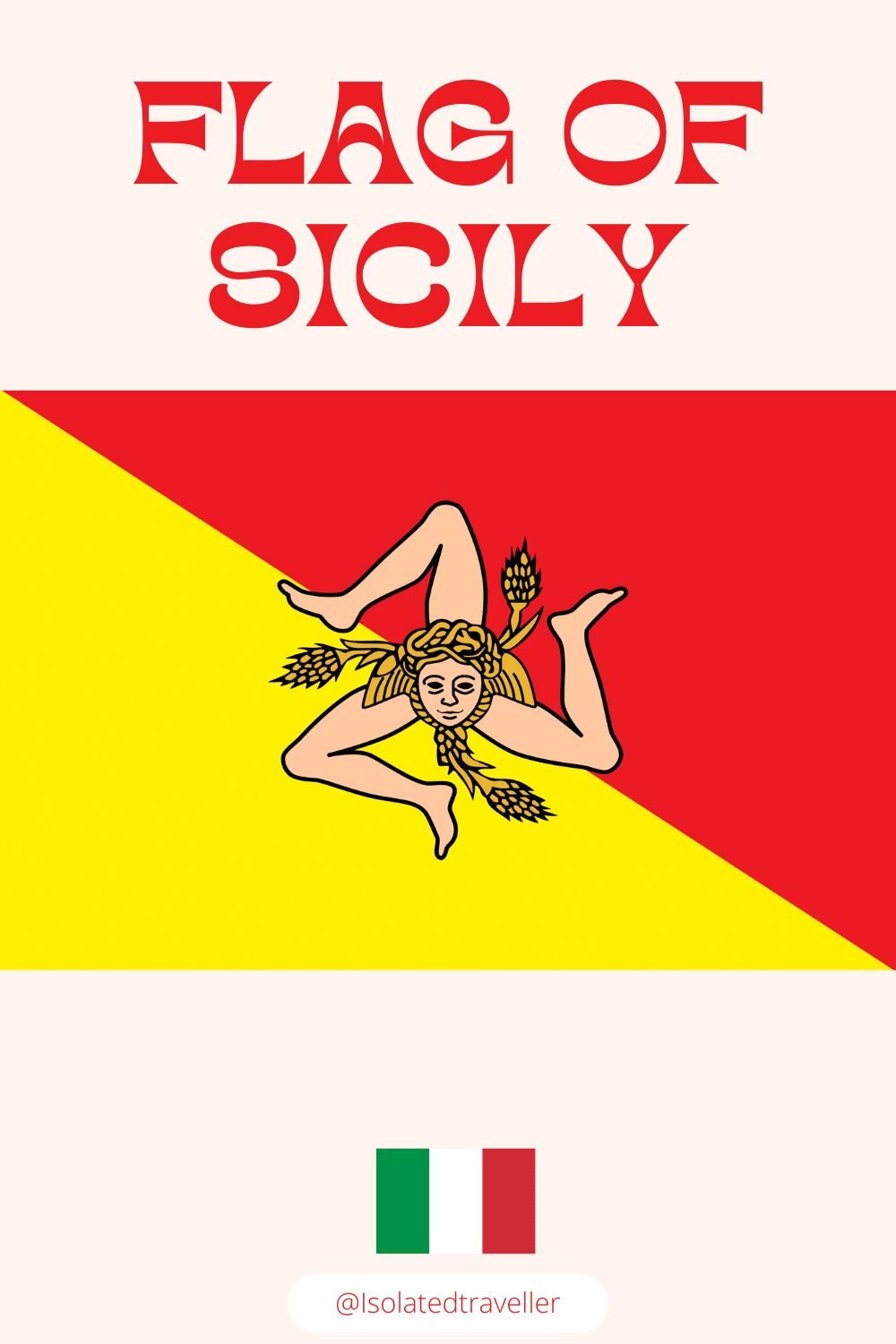Flag of Sicily
The flag of Sicily, also known as the Regnum Siciliae or the Trinacria, is a traditional symbol of Sicily and its history. The flag is bisected diagonally into red and yellow regions. These two colours, red and yellow, represent the cities of Palermo and Corleone, which were the founding cities of a confederation that was established in the 13th century to drive the House of Anjou out of the island. Corleone was historically one of the most important agricultural centres in Sicily.
The central figure on the flag is a trinacria, a Greek word that means ‘three-pointed;’ which is a symbol that represents the island’s three corners: Peloro, Passero, and Lilibeo. The trinacria has three bent legs that form a spiral of rotational symmetry, and it appears on coins from Syracuse dating back to the 4th century BCE.
The face in the centre of the trinacria is that of Medusa, a gorgon with a head of snakes, a beautiful woman seducing men who, upon looking at her, were turned into stone, which is a reference to the protectress of Sicily, the goddess Athena. The flag also includes three wheat ears, which represent the extreme fertility of the island.
Since the Second World War, Sicily has been an autonomous region of Italy, and the flag was officially recognized as the flag of the region by the Sicilian Parliament in 2000.
The Flag has also been adopted by several townships in the two Italian provinces which were once part of the Kingdom of Sicily as their official local flag. The flag is also used by the townships of Alcamo, Caltanissetta, Enna, Modica, Ragusa and Salemi as their official local flag.
- The flag is widely used by Sicilian organisations and private citizens in Sicily and abroad.
- The oldest known depiction of the Trinacria symbol, which is the emblem of Sicily, is a terracotta vase that is currently housed in the Archaeological Museum of Agrigento.

Sicily region
Sicily is an autonomous region of Italy located in the central Mediterranean Sea. It is the largest island in the Mediterranean Sea and one of the 20 regions of Italy. Sicily is located south of the Italian Peninsula and is separated from the mainland by the Strait of Messina. The region is known for its rich history, beautiful beaches, and diverse landscape, which includes mountains, valleys, and coastal plains. Sicily is home to a number of important cultural and historical sites, including the ancient city of Syracuse, the Valley of the Temples in Agrigento, and the ancient Greek theatre in Taormina. The region is also known for its delicious cuisine, which includes a variety of seafood, pasta dishes, and sweet treats like cannoli and granita.
Sicily name origin
The name “Sicily” is derived from the Latin name “Sicilia,” which was originally derived from the Greek name “Σικελία” (Sikelia). It is believed that the name “Sicily” comes from the Sicels, an ancient Italic people who inhabited the island in the first millennium BC. The Sicels were eventually assimilated into the larger Greek culture that dominated the island, and the name “Sicilia” came to be used by the Greeks to refer to the island. The Romans later adopted the name “Sicilia” when they conquered the island in the 3rd century BC. The modern English name “Sicily” is derived from the Latin “Sicilia.”


